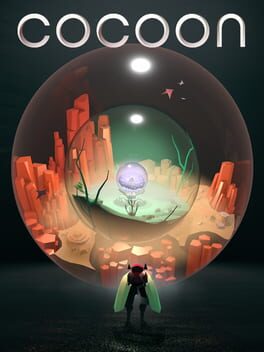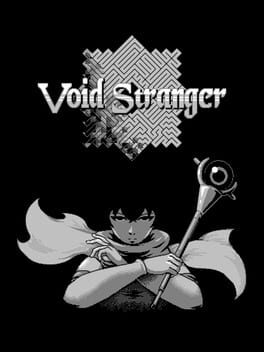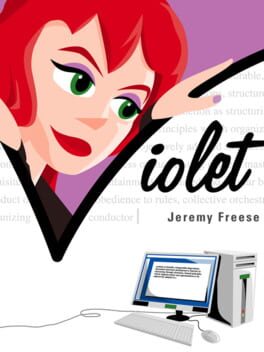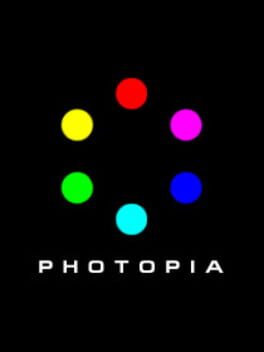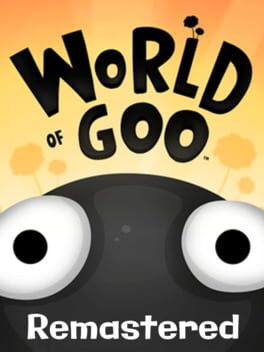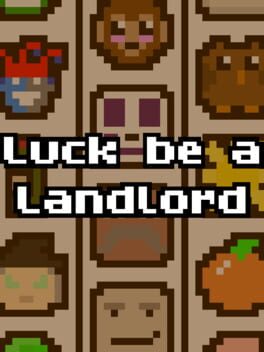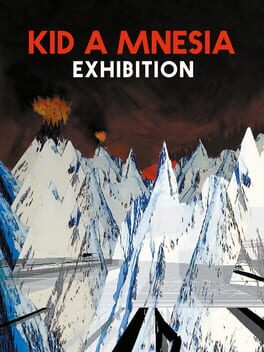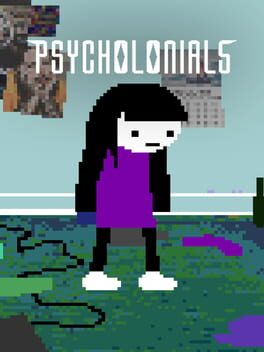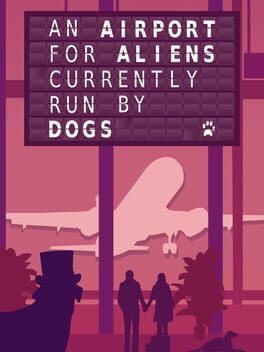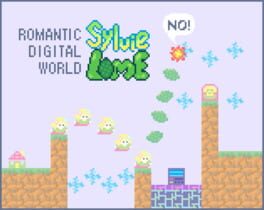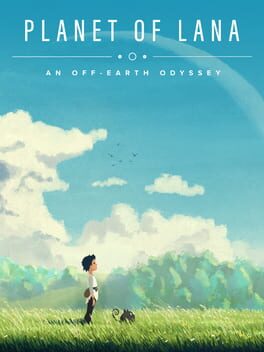lukebee
2023
Having played Recursed and Patrick’s Parabox, I perhaps didn’t find Cocoon’s nested-world puzzles quite as mind-bending as I might have otherwise, but I still had a great time solving them even if I rarely felt particularly challenged. It certainly didn’t hurt that solving those puzzles meant getting constantly rewarded with more weird and cool shit to look at; I adored Cocoon’s animation and art direction. Shoutouts in particular to the transitions in and out of the orbs (important to get right since you’re going to be seeing it a lot, and they absolutely nailed it) and all the different doors (I genuinely started looking forward to seeing what new and exciting way the next door was going to open).
2023
An incredible Sokoban-style puzzle game that is much, much more than meets the eye. Requires a decent amount of patience and tolerance for friction between the lack of undos, the lives system, and quite a bit of repeating previously solved puzzles, but the payoffs are well worth the effort; this is a game that managed to constantly find new ways to surprise and delight me.
2008
Very funny one-room parser IF where you try to overcome countless distractions and write 1000 words of your dissertation while an imaginary version of your girlfriend Violet serves as the narrator and tries to keep you on task. Needed a couple of hints to complete it but the narration and the increasingly absurd puzzle solutions were more than entertaining enough to make up for the occasional bit of obtuseness.
2012
Continuing my haphazard tour through whatever games featured in 50 Years of Text Games that piqued my interest with Howling Dogs, a surreal piece of Twine-based IF about being trapped in a prison of sorts and diving into virtual worlds as your sole escape (only the women you become in those virtual worlds aren't any freer than you are). At times mundane and repetitive, and at others grotesque, or tragic, or beautiful.
1998
A short and excellent work of parser-based interactive fiction that doesn't really have any puzzles but nevertheless uses its medium to great effect. Really glad I took the spoiler warning in 50 Years of Text Games to heart and went in blind, because there are moments of comprehension and epiphany that were alternately thrilling and devastating, where a single seemingly innocuous line of narration was able to instill a sense of curious wonder or mounting dread (and in the latter case, trying to act on my sudden sense of urgency only let the game twist the knife that much deeper). As John Walker wrote, "to describe [Photopia] is to destroy it", so go play it for yourself to discover what it's about.
2018
Another excellent programming puzzle game from Zachtronics. I'm a sucker for touches like tucking away the documentation inside printable zines with extra worldbuilding, and I really enjoyed trying to work around the kinds of very limited constraints that Exapunks revels in. (My kingdom for just one more register!)
Besides the main programming puzzles, there's also the obligatory solitaire variant (which I always enjoy), an arcade puzzle game (I'm no better at it than I was at the expanded version in Last Call BBS, that whole genre isn't really my thing but I'm sure other people will have fun with it), a level editor, a multiplayer hacker battle mode (I didn't try it myself but the hacker battle levels in the main campaign were neat), and wildly, a sandbox for making your own video games for a virtual handheld console, using the same assembly language that you solve the game's levels with. The thought of trying to make a video game within Exapunks' constraints is staggering to me, but then again people have made playable games in everything from Minecraft to Baba Is You, so I'm sure some ambitious programmers out there have actually made use of it.
Anyways, I thought the final level was gonna be the death of me, but I did conquer it in the end and it was immensely satisfying. Probably gonna give Exapunks a rest for now and save the post-game bonus levels for later since I'm currently feeling kinda at my limit with the game, but overall I had a great time with it.
Besides the main programming puzzles, there's also the obligatory solitaire variant (which I always enjoy), an arcade puzzle game (I'm no better at it than I was at the expanded version in Last Call BBS, that whole genre isn't really my thing but I'm sure other people will have fun with it), a level editor, a multiplayer hacker battle mode (I didn't try it myself but the hacker battle levels in the main campaign were neat), and wildly, a sandbox for making your own video games for a virtual handheld console, using the same assembly language that you solve the game's levels with. The thought of trying to make a video game within Exapunks' constraints is staggering to me, but then again people have made playable games in everything from Minecraft to Baba Is You, so I'm sure some ambitious programmers out there have actually made use of it.
Anyways, I thought the final level was gonna be the death of me, but I did conquer it in the end and it was immensely satisfying. Probably gonna give Exapunks a rest for now and save the post-game bonus levels for later since I'm currently feeling kinda at my limit with the game, but overall I had a great time with it.
Classic tower/bridge construction physics puzzler that I was eager to return to after last playing it over a decade ago. I found that I enjoyed the gameplay less than I remembered—you kind of just end up employing the same basic structures over and over, and a couple of the levels are pretty frustrating—but the presentation is still a delight; the whimsical art direction, story, and especially the soundtrack really carry the whole experience and make it feel far more exciting and inventive than it would otherwise.
2021
Addictive little roguelike deckbuilder based around manipulating the symbols that appear on a slot machine. Add symbols that increase the income of your other symbols, add symbols that destroy other symbols for big one-time payouts, and prune away symbols that bring down your average payout. Once you play enough to recognize all the different symbols and items, it’s easy enough to just start picking good ones at a glance and more or less play on autopilot, juggling a few different potential builds until either one of them starts taking off or the whole thing stalls out and the rent payments catch up to you. I didn’t mind the mindlessness of it though, it makes for a really chill zone-out-or-listen-to-a-podcast sort of game.
I do find the slot machine theming kinda funny though, because unlike a real slot machine, the machine payouts are relatively consistent; even if you are reliant on specific arrangements/combinations, they tend to simply require having a couple specific symbols show up in adjacent spots, which you can count on happening every few spins unless you’ve really bloated your machine with too much junk. Instead, it’s the selection of new symbols and items between spins where most of the run-deciding RNG resides.
I do find the slot machine theming kinda funny though, because unlike a real slot machine, the machine payouts are relatively consistent; even if you are reliant on specific arrangements/combinations, they tend to simply require having a couple specific symbols show up in adjacent spots, which you can count on happening every few spins unless you’ve really bloated your machine with too much junk. Instead, it’s the selection of new symbols and items between spins where most of the run-deciding RNG resides.
2023
2021
At once a fiery power fantasy about bringing America to its knees and a cautionary tale about internet fame swallowing its subject whole, Psychocolonials is a fascinating visual novel. It’s kind of impossible to talk about it without talking about its creator Andrew Hussie’s most well-known work, Homestuck, so let’s get into that first. There’s obviously plenty of overlap in narrative voice and art style (and music, courtesy of Homestuck music team member Clark Powell), but even when it comes to its format, Psychocolonials feels more like Homestuck than it does like other VNs; rather than reused sprites and backgrounds punctuated by bespoke CGs, Psychocolonials is entirely composed of unique if rough illustrations (tellingly, they’re even referred to as “panels” at one point) and the occasional animated cutscene (I kept getting thrown off by the lack of a “[S]” preceding each one). And of course, it’s hard not to read parts of the story as allegorical for Hussie’s own experiences as the figure at the center of Homestuck’s passionate fandom—the mental-health-destroying weight of all that attention, the inability to control your following even as you bear responsibility for your influence over it.
Even if you don’t know a thing about Homestuck though, Psychocolonials is a great time. It’s fun watching events rapidly escalate from social media rebrand to geopolitical chaos, the character writing is really sharp, and as fucked up and bleak as it gets at times, it’s also incredibly funny when it wants to be; there’s one gag in particular involving spinning guns that absolutely killed me. The ending goes on longer than it needed to and the pontificating about leftist revolutions at the end felt pretty shallow, but I did enjoy getting called out for trying to save-scum the final choices.
Even if you don’t know a thing about Homestuck though, Psychocolonials is a great time. It’s fun watching events rapidly escalate from social media rebrand to geopolitical chaos, the character writing is really sharp, and as fucked up and bleak as it gets at times, it’s also incredibly funny when it wants to be; there’s one gag in particular involving spinning guns that absolutely killed me. The ending goes on longer than it needed to and the pontificating about leftist revolutions at the end felt pretty shallow, but I did enjoy getting called out for trying to save-scum the final choices.
The gameplay gets a little tedious as it goes on and you start repeating fetch quests for the dogs at the gates (doubly so when you have to do a couple back-to-back because there isn't a direct flight to the airport you're trying to get to), but the writing is very silly and the relationship stuff that makes up the central narrative is really sweet. There are some good mechanical goofs as well, like how the large coffee is so big it immediately starts vibrating through the coffee shop geometry because there isn't enough room for it at its spawn point and then once you pick it up it almost completely blocks your view.
2022
A gauntlet of tiny single-screen platforming challenges made absurdly difficult by the slippery, bouncy, kinda janky movement, as well as the chaotic mess of moving platforms and hazards that make up most levels. I feel pretty proud of myself for only resorting to the skip button for 2 of the 60 levels.
2022
A playfully antagonistic exploration platformer that isn’t afraid to very intentionally add friction to the player’s experience. The movement is difficult to get the hang of (lots of inertia and it’s impossible to hug walls because you rebound off of them), there are false walls and floors aplenty (made more difficult to find by the fact that you can’t hug walls), there are secret passages that are only revealed by using one of your items at the entrance, there’s no detailed map so you have to just try to remember where everything is, you generally aren’t given any direction on where you should go, and the only checkpoints you get are the ones you remember to place yourself (and by “place” I mean “throw repeatedly until you figure out how to get it to not bounce into spikes”).
To be clear, none of these are complaints; Sylvie Lime is occasionally frustrating but those quirks are what make it so interesting and rewarding. It’s a game that wants to be in conversation with the player, wants you to think about what it’s doing and why, wants to tell you about what it’s doing and why. I was reminded a bit of Anodyne 2, another excellent game that directly addresses the player at certain points to talk about its own design.
To be clear, none of these are complaints; Sylvie Lime is occasionally frustrating but those quirks are what make it so interesting and rewarding. It’s a game that wants to be in conversation with the player, wants you to think about what it’s doing and why, wants to tell you about what it’s doing and why. I was reminded a bit of Anodyne 2, another excellent game that directly addresses the player at certain points to talk about its own design.
2023
A puzzle-platformer that answers the question “What if Inside had bright colors and a little pet that follows you around?” It’s cute enough and quite pretty, but honestly I wasn’t super engaged for most of my playtime; the puzzles were mostly just a lot of pushing boxes and waiting for patrolling enemies to turn around and trying to remember which buttons I needed to hit to make my alien companion stand in the right spot, and and the pretty landscapes mostly kinda blended together. It did start to win me over eventually though, first with a really gorgeous scene of a night sky and sunrise, and then with some really cool aesthetic shifts and fun setpieces towards the end, and I was pleasantly surprised by the use of stillness in a climactic scene. There’s nothing nearly as wild or surprising as Inside’s ending, but I came away from the game liking it more than I was expecting.
